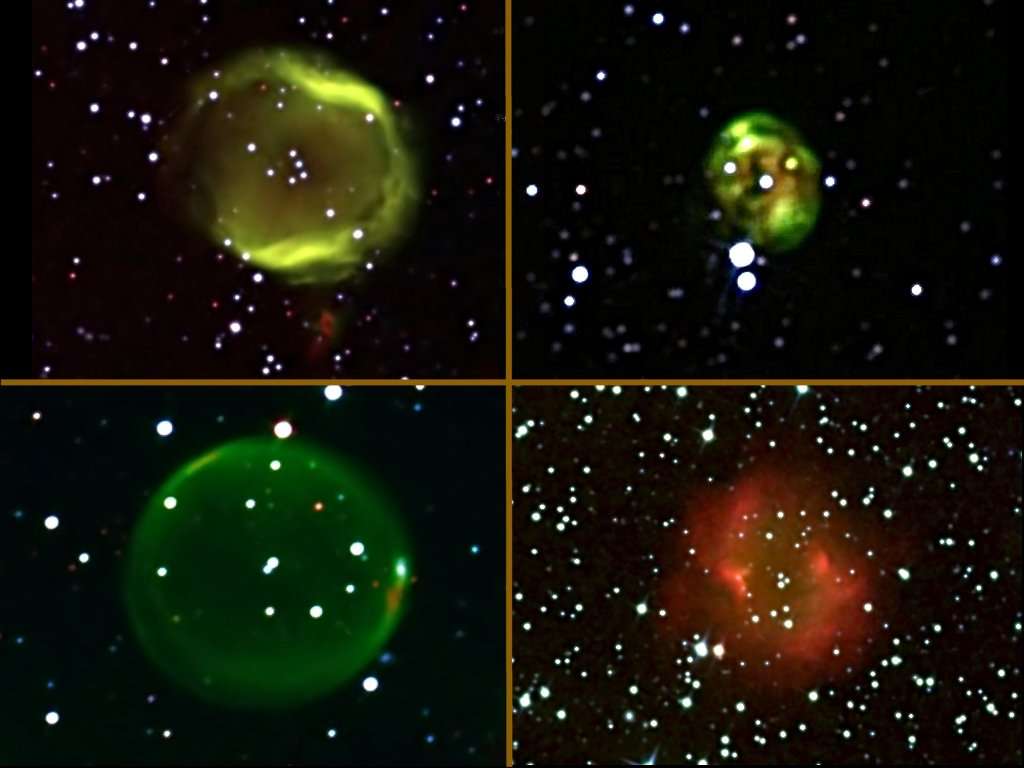
|
Planetary Nebulae
When astronomers first spotted these objects through telescopes they were
named "planetary" nebulae. They looked like planets, especially the blue and
green planeets Uranus and Neptune. We now know that rather than showing a
planet, these objects give us a glimpse at the distant furture of our own
Sun. Once a star like our Sun exhausts all its available fuel, it expnads to
a huge size and then gently ejects its outer layers into space. The star's
exposed core heats the ejected layers, energizing the gas and creating the
nebula. The greeninsh tinge in these images is from oxygen gas, while the
rreddish emission is from hydrogen gas.
This is a very brief phase in the evolution of a star, lasting only about
100,000years, after which the nebula disperses and the core cools. As to the
fate of any planets surrounding these stars, we do not kow. They either
spraled into the star as it grew and were incinerated, or they survived and
now circle the rapidly cooling core of the star.
|

|
|
